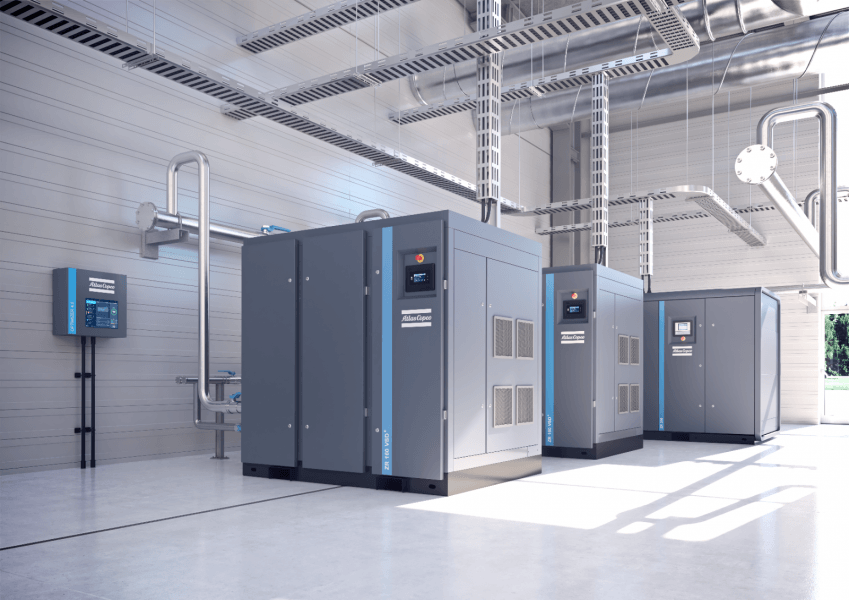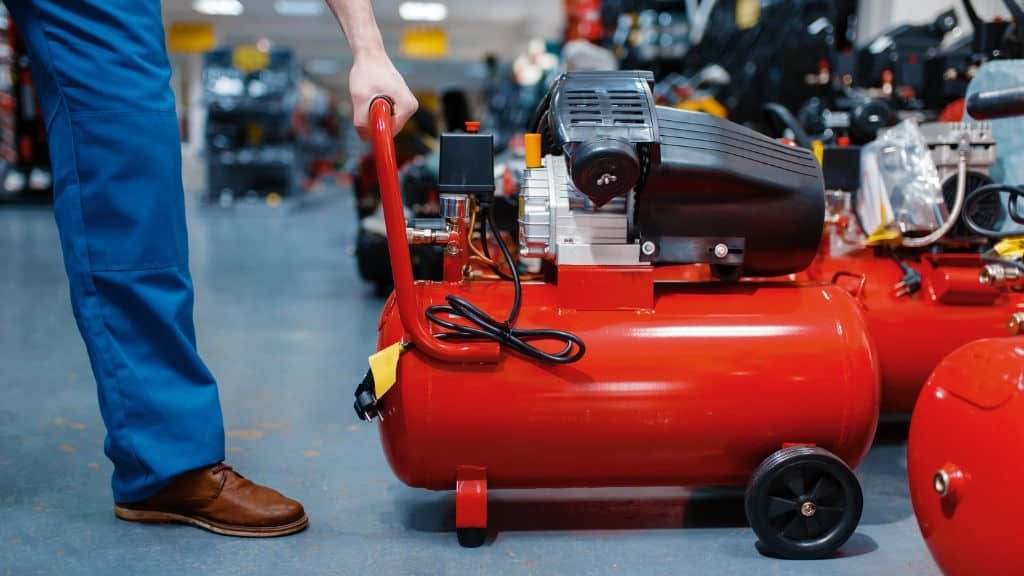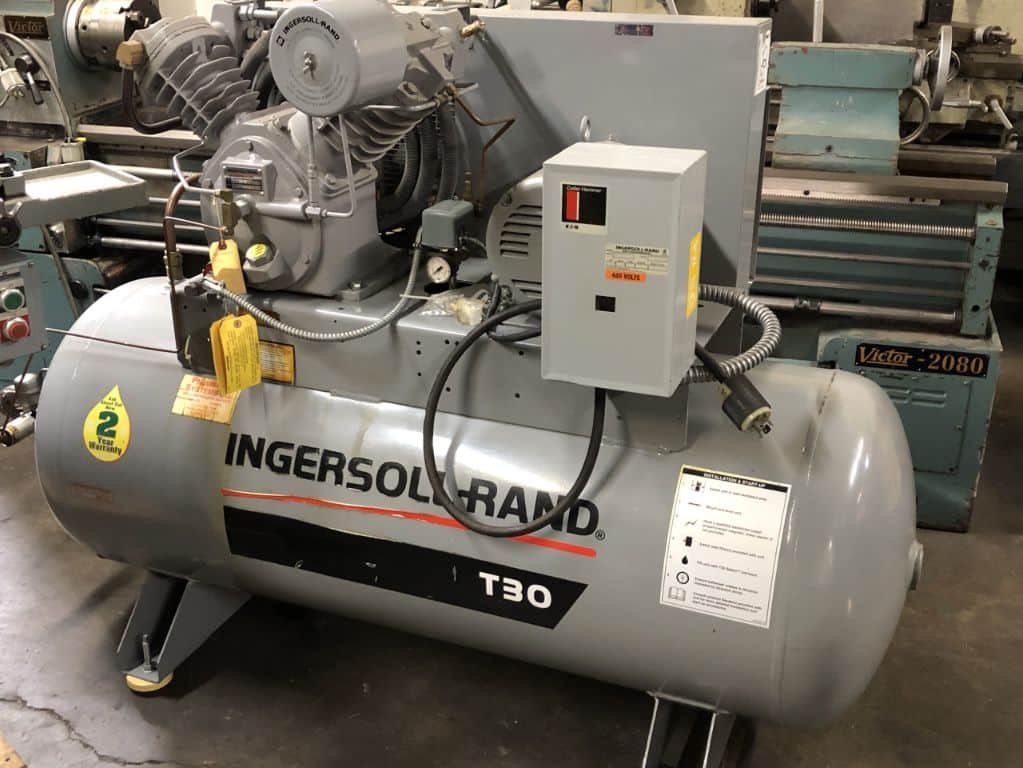If you’ve ever used power tools, you may already know the utility of an air compressor. An air compressor is a versatile power source that is used to power various pneumatic equipment. From nail guns, spray guns, sanders, and drills to heavy-duty industrial machinery, air compressors find application in a wide range of fields.
In this guide, we aim to provide you with a comprehensive understanding of the different types of air compressors, how they function, and their applications, to help you choose the right one for your needs.
How Does an Air Compressor Work?
An air compressor is a machine that converts power from an electric motor, gasoline engine, or diesel engine power to potential energy stored in compressed air. This compressed air is then used for various applications, as per need.
Initially, air is sucked into the compressor through an air filter. It’s then compressed and delivered into a tank or receiver where it’s stored under pressure. Air is then dispensed through hoses connected to the tank when needed.
Types of Air Compressors
Air compressors come in different types and designs, each with unique features and applications.
Reciprocating or Piston Type Compressors
Reciprocating compressors are one of the most common types of air compressors suitable for small-scale DIY and industrial applications. As the name suggests, these compressors use a system of pistons and cylinders to compress air within the tank. They are further classified into single-stage and two-stage compressors, depending on the number of times the air is compressed and stored before use.
Rotary Screw Compressors
Rotary screw compressors use two rotors or screws to compress air instead of pistons. They are widely used in industrial settings for their higher efficiency, durability, and silent operation compared to reciprocating compressors.
Portable or Stationary Compressors
Based on portability, air compressors can be broadly classified as portable or stationary types. Portable air compressors are lighter, smaller, and ideal for DIYers, and contractors who require compressed air on the go. Stationary compressors, on the other hand, are larger, heavier, and best suited for industrial and commercial settings, where high-pressure, high-volume air is required.
Oil-free or Lubricated Compressors
Air compressors that use oil to lubricate the piston or screw system are referred to as lubricated compressors. On the other hand, oil-free compressors use special coatings, Teflon or metal rings to reduce friction in the compression chamber. Oil-free compressors are ideal for critical applications like food processing and healthcare, where minute traces of oil can contaminate the process line.
Applications of Air Compressors
The following are some of the most common applications of air compressors:
Industrial Applications
Air compressors are widely used in different industry verticals like manufacturing, construction, oil and gas, mining and processing, and automotive and transportation. The applications range from powering pneumatic tools, manufacturing processes, HVAC systems, and material handling.
Residential and DIY
In households, air compressors find applications in a wide range of chores- from inflating toys, bicycles to powering nail guns, paint sprayers, and sanders for DIY projects.
How to Choose the Right Air Compressor
Choosing the right air compressor can be a daunting task, considering the wide range of types available in the market. But considering your unique needs can help you narrow down the choices. Consider the following factors while choosing the right compressor:
- Consider the Applications
- Consider the Airflow and Pressure Requirements
- Tank Size
- Portability
- Power source
- Price and Durability
In conclusion, understanding the different types of air compressors and their applications is crucial to make an informed decision while choosing the right compressor. Each type has its unique advantages and features that cater to different industrial and residential needs. Consider your unique needs and choose wisely.




